How’s your budget looking? If you are renovating your house, then you need to go for the best. You know about the materials that didn’t work out well for your house the last time, which means that you need to spend a little extra.
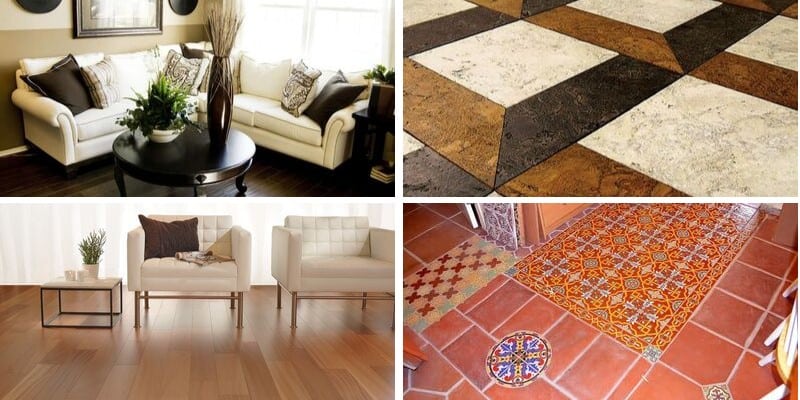
Let’s lay down the base first and by that, we mean the flooring. There are plenty of floor options to choose from.
Depending on the type of look you are aiming for, you have more than a dozen floor options. We have listed down the most popular materials that people usually go for:
Ceramic Tile
Have no fear because tile is here. This is one flooring option that is found in every household all over the world and in different patterns as shown below.
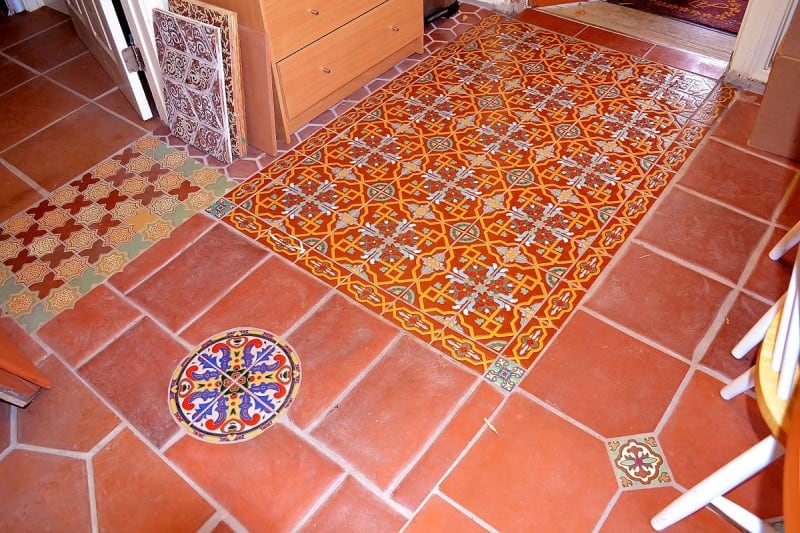
It is one of the best options for kitchens, bathrooms, mudrooms and laundry rooms and entryways.
When it comes to style and color options, tiles have the highest number. From pure ceramic to tiny mosaics and even faux wood, there is no design that tile cannot deliver.
Porcelain Tile
Porcelain tiles are the same as ceramic tiles. They offer this endless look that gives the room a grand look. There was a time when porcelain tiles were used in bedrooms.
However, with the advent of more versatile and durable floor options, they have become obsolete. This flooring is now mostly found in malls.
The best thing about porcelain and ceramic tiles is that they don’t require much maintenance. To prevent staining, the grout should be periodically sealed.
While both these floor options are not that expensive but the labor cost raises their price. It is important to get a cement board underneath before installing the tiles.
Hardwood
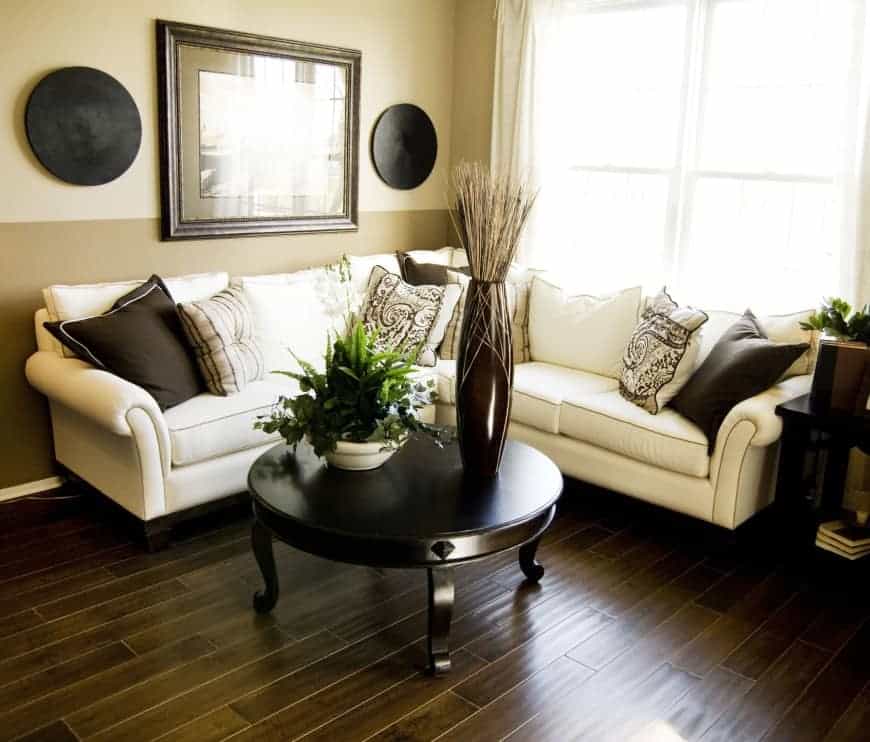
Hardwood is a favorite of every homeowner. This is the best floor option for the living area. The only drawback of this flooring is that you cannot install in it a place that gets wet frequently or receives a lot of traffic.
Bamboo
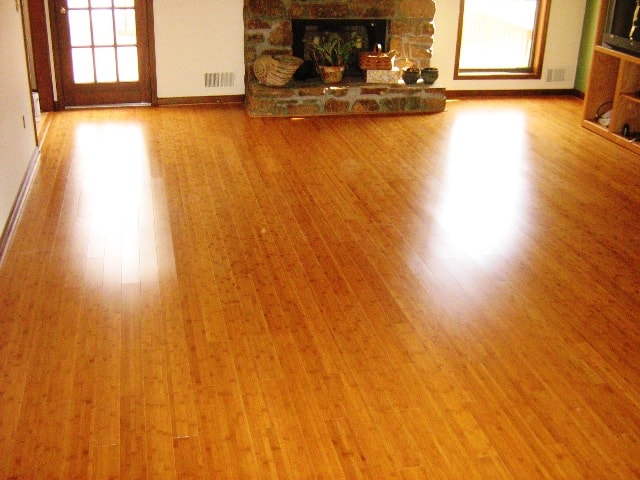
Bamboo is similar to hardwood, but this floor option is lighter in weight. It is also susceptible to moisture and therefore cannot be installed anywhere except for in the dining room and living room.
Both hardwood and bamboo are expensive and depending on the type of wood you are choosing, the price can go higher.
This floor can be glued or nailed down. The labor cost is not that high and if you are going for a DIY job, then there are plenty of tutorials available online for guidance.
It’s important to get a finish on these flooring options. This provides a moderate resistance from moisture. Plus, you need to keep up with the maintenance or you will see scratches all over the floor after a few months.
Laminate
Compared to hardwood, a laminate floor is quite affordable. This floor is made from a resin and wood pulp, which lends it a faux wood look. One of the best things about laminate is that it comes in various designs and can mimic any hardwood-style such as cherry, maple, barn wood, wide-plank pine, and more.
Laminate flooring has a layer of medium-density fiberboard, another of photo and then a thick finish of polymer.
The strips click together, which makes the installation pretty easy. If the finish is damaged, you can get it refinished.
The same cannot be done for hardwood, which is what makes it a better option. Laminate is stain and moisture-resistant, tough and if installed correctly, can last a very long time.
Vinyl
Vinyl floor is available in tiles, as well as floors. It can be easily installed in place with glue. It comes in a wide range of profiles and colors. Lastly, it can also mimic the look of other floor materials. Vinyl is durable, easy to maintain and does not buckle underwater.
Linoleum
The linoleum floor is made from biodegradable and renewable materials like cork and linseed oil. It is an environment-friendly floor option and can be easily installed using glue.
Linoleum comes in sheets that have mineral pigments, which give it a rich pattern and color. To prevent wear and staining, the completed floors are covered with a protective coat.
Cork
Cork is another environment-friendly floor option. The material of this floor comes from tree bark and no trees are killed in the process. In ten years, the bark re-grows and more materials are harvested for making the floor.
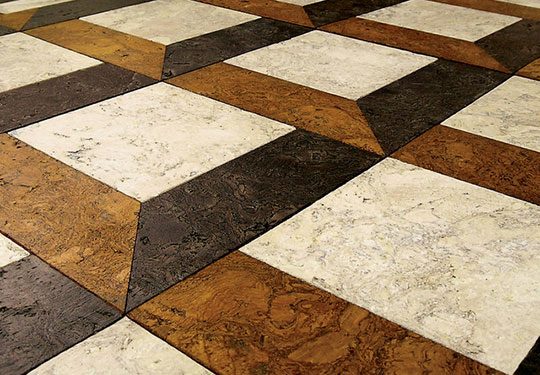
Aesthetically, cork has the same appearance as wood. The grain pattern has swirls and speckles that give it a rustic look.
Cork is available in tiles and planks and contains a top laminate layer that is glued to the core material underneath. This flooring material requires resealing every five years to protect it from moisture and stains. A commonly used sealer is wax or polyurethane.
This brings us to the end on the types of floor options. Now that you know about what floor materials are available to you, which one is it gonna be? If you are looking for more informational articles like this, then visit Epic Home Ideas.
Related Posts
- Different Types of Finishes That Make Concrete Floors Aesthetically Appealing
- 10 Main Pros and Cons of Acid Stained Concrete Floors
- 3 Methods to Remove Candle Wax From Your Carpet (With Iron, Hair Dryer, Natural Products)
- 13 Types of Carpets for Your Home (By Material, Pile, Padding)
- How Much Does it Cost to Epoxy a Garage Floor? All Details Below
- 20 Different Types of Tiles for Home Flooring, Walls, Countertops, Backsplash
Im looking for software program allowing for different wallcovering choices with multiple wallcovering manufacturers. Can you tell me if you have something along that line?
Sandra, unfortunately we don’t have such a program. Sorry about that.